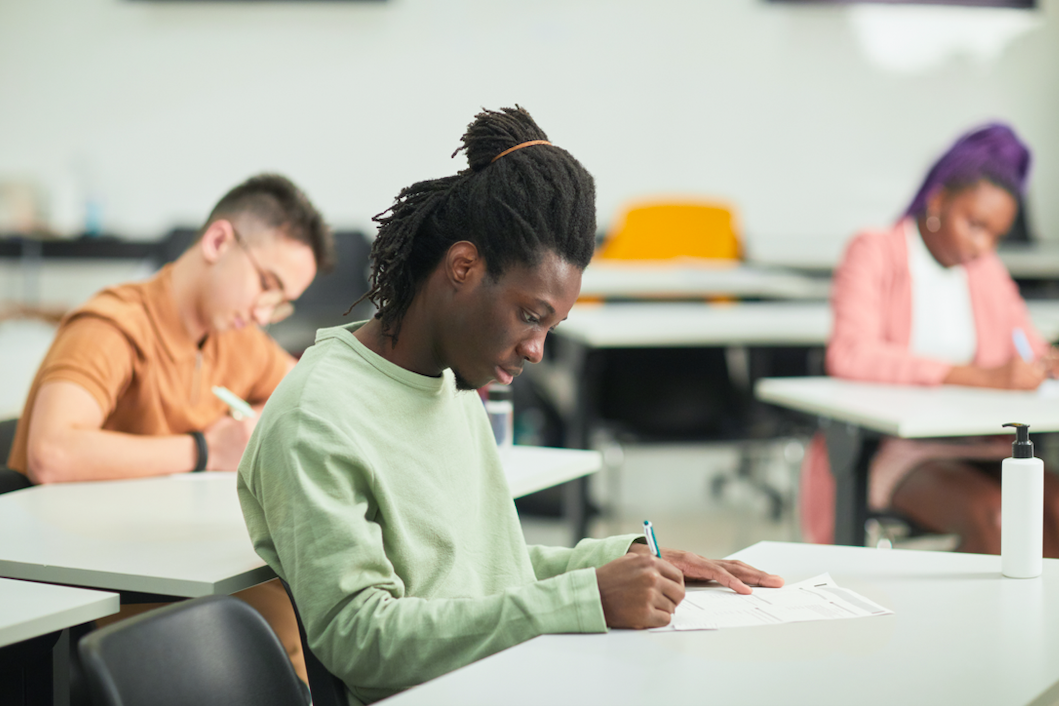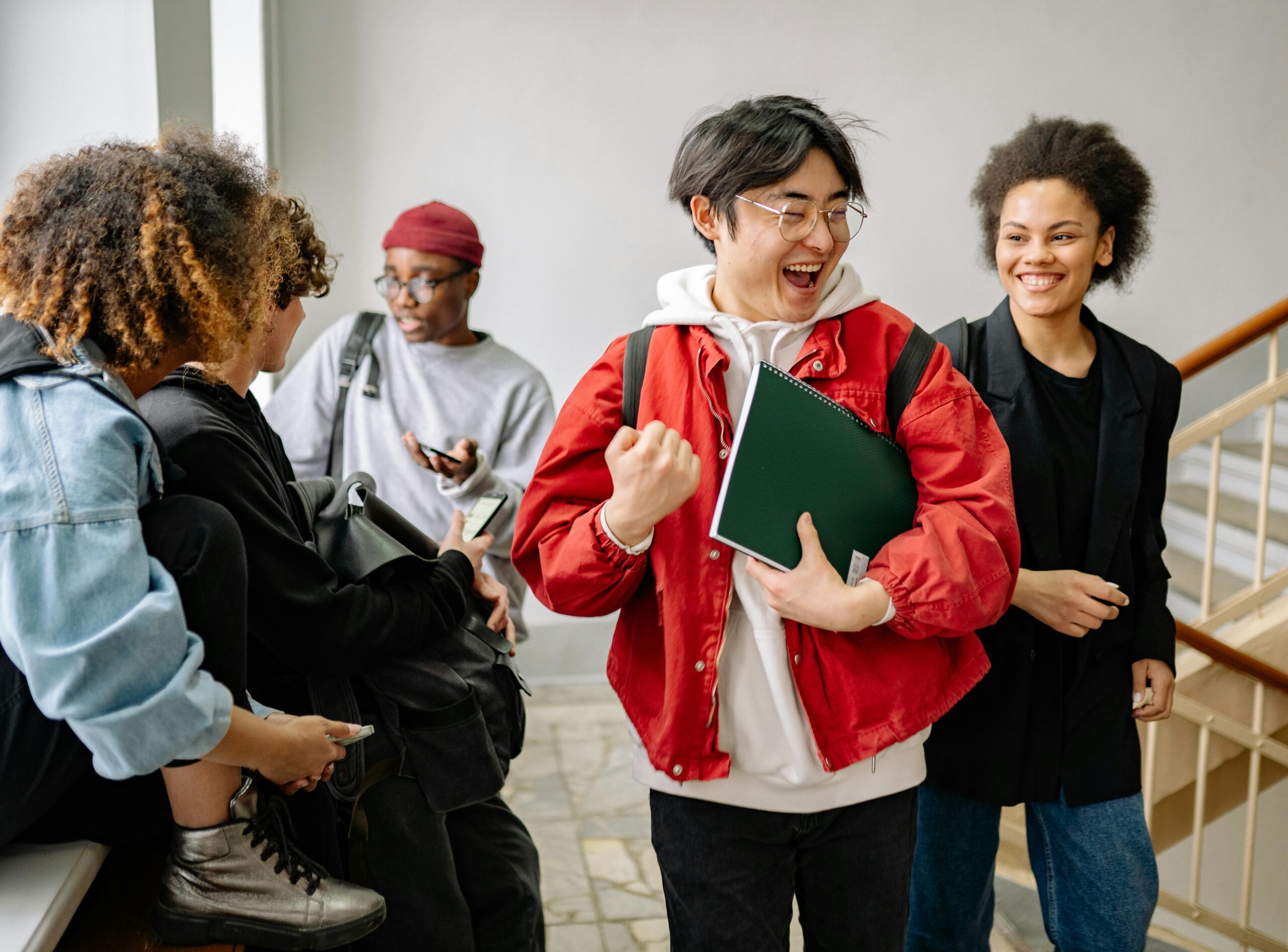
Three Steps To Practice Mindfulness During Testing Season And Teach It To Your Students
By: Nautrie Jones
100% Virtual.
100% In-Person Learning.
Hybrid.
Synchronous.
Asynchronous.
If you are in any field relating to education, it is likely that both you and your students are quite familiar with one or all of these terms. This past year has been a challenge for us all. Students have been pushed and pulled in many different ways. Teachers have been stretched and stressed, and, at the same time, our society today is learning how to better listen and have empathy for one another. Whew!
Now add to that same challenging school year…a season of standardized testing. That is a lot for anyone.
Let’s pause.
Inhale.
Exhale.
You feel that?
According to Katara McCarty, “When we pull away from the busyness of the world and sit with ourselves, we have the opportunity to become more centered and grounded.” We need to do more of that.
I probably don’t have to tell you this, but pandemic teaching and learning is unlike anything we’ve seen before, and adding the layer for testing will require additional capacity to focus on what matters most and to complete the task ahead. It will require focus, resolve, and a set of actions that will support the wellness of students and teachers.
Laurie Grossman, who created the Mindful Schools organization said, “The focus on testing has become so intense that teachers feel enormous pressure. And students share that pressure to perform.” As a teacher myself, from the time I walk into the school building until I leave for the day, there is always something to do or think about. For students, when they wake up, their access to information and a push from the world around them to do and be more seems to be awaiting them each day. We feel all of that weight and pressure — on our bodies, minds, and emotions — and we carry it with us right into the testing room.
So, what’s the answer to managing this intense pressure? Mindfulness.

Mindfulness is focusing on being intensely aware of what you’re sensing and feeling in the moment, without interpretation or judgment. It’s simply letting yourself feel or think whatever you are feeling or thinking in the moment before trying to analyze it.
Imagine being afraid or feeling scared. We must first experience sensations in our bodies that let us know what those feelings are, and then we can work to manage our emotions and protect ourselves. This is true for both students and teachers.
“The good news is that mindfulness helps calm everyone down about the process of testing. Instead of worrying about tests, being present for them enhances students’ chances for success,” Grossman said.
Incorporating mindful practices as part of your daily routine can truly help teachers and students. So, how do we do this? Here are three steps to practice this and teach it to our students:
1. Notice and name
Research shows that teachers’ feelings and attitudes can shape the way they view and interact with their students.
Teachers: Make a habit of checking in with yourself. Notice: Ask yourself how you are doing. Name: Try to identify why you might be feeling the way you’re feeling. If you can identify that you’re frustrated and why you might be frustrated, it could help you to figure out what next steps might need to be taken. If you can’t get to any action just yet, that’s ok. The important thing is to notice and name it.
Students: Share your thoughts or reflections with your students, and encourage them to use the process on their own by making space for these conversations one-on-one, in small groups, or in whole groups.
2. Talk to trusted friends or journal
Mindfulness allows us to get reacquainted with the truest, most authentic version of ourselves and know who we are in this season of life.
Teachers: In my own life, I found that I was able to teach because I had trusted colleagues who pushed me to bring the best version of myself each day — well…most days. Find that person or group of people for you. This unique group will allow you to be who you are, and they will link arms with you and ask, “So, now what? What will we do about this? How will we navigate this together?” Sometimes finding these groups can be tough, so perhaps you’d rather share your most inner thoughts and vulnerabilities through writing. That works too.
Students: Similar to the first tip, you can share and model this strategy with students. Invite them to jot down their thoughts using a prompt, drawing, coloring, or free writing. Incorporate guided discussions in your classrooms that create space for students to learn more about themselves and others so that they can possibly find a peer group that they can trust.
3. Take tangible steps
Mindfulness is not an event that needs to be blocked out on your calendar, but moments taken throughout the day to commit to yourself.
Teachers: Define it for yourself. Mindfulness requires us to actively engage regularly. Make a commitment to be mindful and gentle with yourself and your students as you enter, engage or wrap up testing season.
Students: Invite students to do the same. Define what mindfulness will look like together, and challenge one another to take small daily steps.
Testing season is here. Students are here. Teachers are here. We have to be whole. Like Laurie Grossman said, “When we practice mindfulness, we grow to see how our emotional and physical well-being are tied together.” Let’s keep this in mind as we help students navigate this stressful testing season.
Book Nautrie to come to your school campus!






